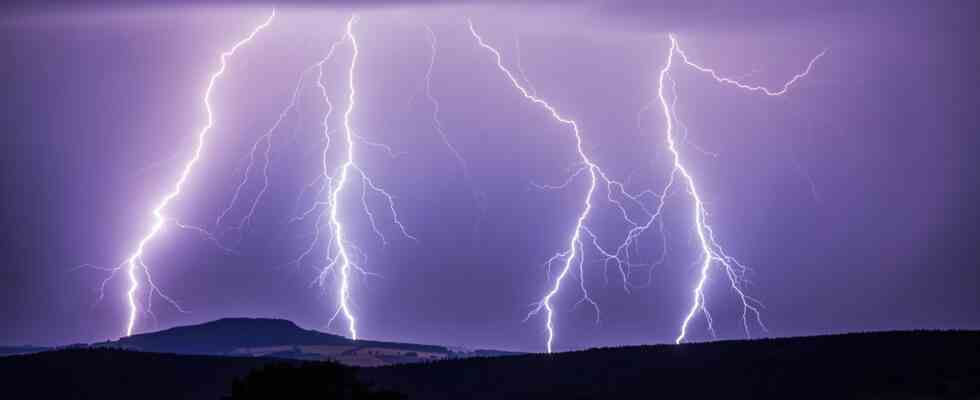Status: 07/18/2022 11:25 a.m
It crackles in the sky – almost 500,000 times last year. The number of lightning strikes has increased significantly compared to the previous year. One district was particularly affected, as a lightning atlas shows.
Last year there were more flashes in Germany than in 2020. The highest density of flashes was in the Starnberg district and in Baden-Württemberg. The district south of Munich in particular stands out as a hotspot in the Siemens Blitzatlas 2021 that has now been published: With 7.6 lightning strikes per square kilometer, it leaves the second-placed urban district of Augsburg well behind, with 5.9 lightning strikes per square kilometer.
The Baden-Württemberg Bodenseekreis district (also 5.9) is in third place among the lightning hotspots. He is the only non-Bavarian among the twelve districts and cities with the most flashes.
June is lightning peak month
At the state level, Baden-Württemberg is still at the top with a lightning density of 2.61, ahead of Bavaria, which comes in second with 2.18 flashes per square kilometer. They are followed by Schleswig-Holstein and Hamburg with 1.67 and 1.66. The nationwide average was 1.4 flashes per square kilometer. Across Germany, the number of lightning strikes rose by almost a quarter to around 491,000 last year.
Every eleventh of them struck on June 29th, the most lightning day in Germany. At that time, storms had caused severe damage in parts of the Federal Republic. Overall, more than half of all lightning strikes last year in June. “Compared to previous years, 2021 was again significantly rainier, but temperatures were still high, especially in June,” explains Stephan Thern, head of Siemens’ lightning information service. “So the basic requirements for thunderstorms – moisture and hot temperatures – were in place to register a significantly more lightning-intensive year.”
Proximity to the edge of the Alps plays a major role
Nevertheless, the lightning density in 2021 was around the average of the past ten years. There were a total of 43 thunderstorm days in the Starnberg lightning hotspot, says Thern. He is not surprised that the highest lightning densities were measured in the south: “With the predominantly Bavarian urban and rural districts among the top 10, the proximity to the edge of the Alps certainly plays a major role – as almost every year.”
Anyone who is afraid of lightning was best off in Solingen in 2021. With 0.18 flashes per square kilometer, there were relatively few strikes here. Brandenburg an der Havel with 0.20 and the urban district of Bremen with 0.26 were also extremely low in lightning in 2021. At the federal state level, Bremen, Saxony-Anhalt and Saarland were the least affected in relation to their size.
Impacts accurate to 50 meters
In a European comparison, Germany, with its 1.4 lightning strikes per square kilometer, ranks 18th out of 43 countries. The highest lightning densities last year were in Bosnia-Herzegovina, Slovenia and Montenegro, and the lowest in Ireland, Norway and the United Kingdom.
The lightning is measured with the help of around 160 interconnected measuring stations in Europe. Although there are up to 350 kilometers between the sensors, the lightning strikes can be determined with an accuracy of up to 50 meters.

